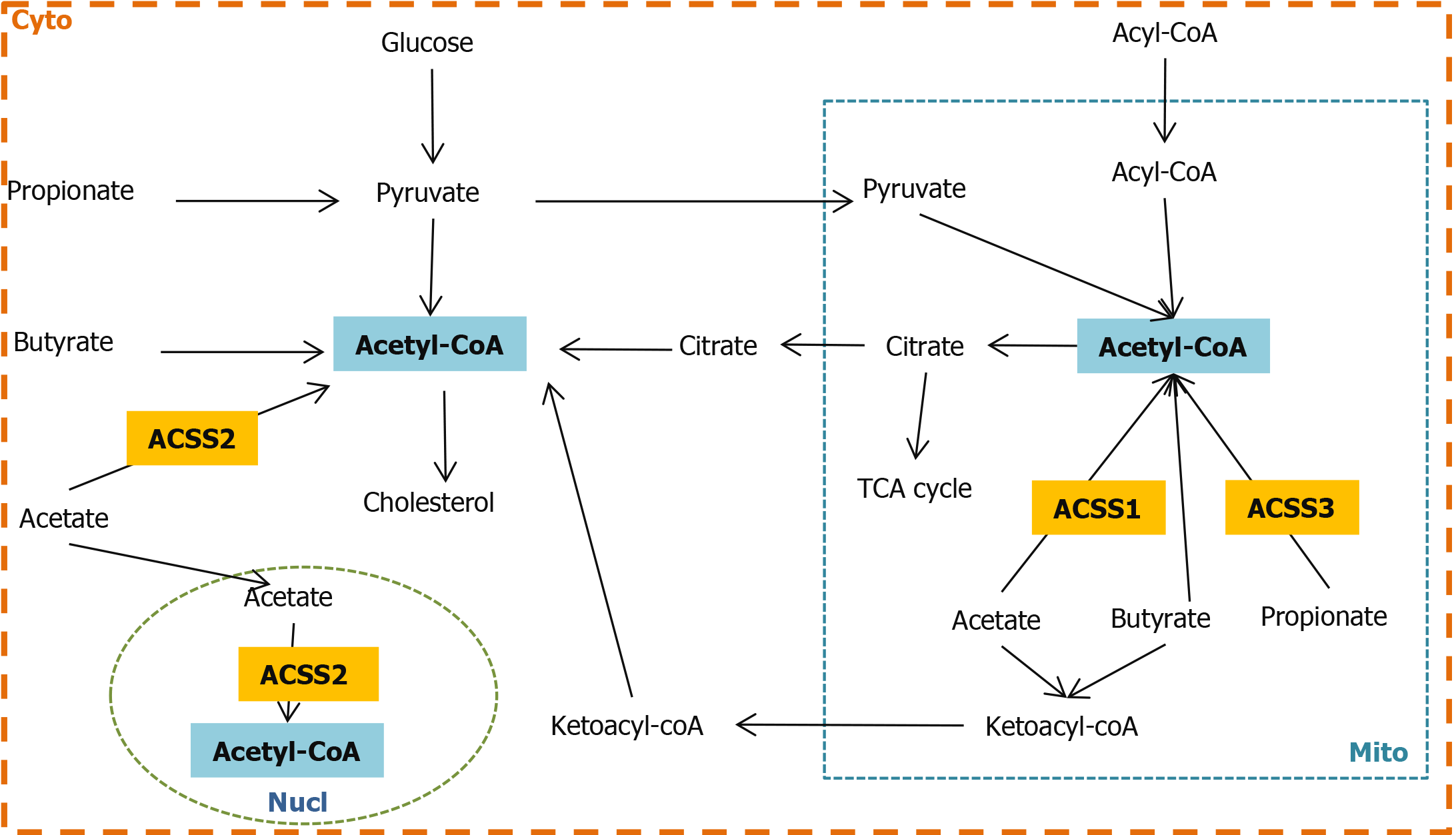Copyright
©The Author(s) 2021.
World J Hepatol. Nov 27, 2021; 13(11): 1512-1533
Published online Nov 27, 2021. doi: 10.4254/wjh.v13.i11.1512
Published online Nov 27, 2021. doi: 10.4254/wjh.v13.i11.1512
Figure 2 The crosslink between acyl-CoA synthetases and short-chain fatty acids.
In mitochondria, acetyl-CoA is generated either from fatty acid β-oxidation and glucose via pyruvate or SCFAs through ACSS1 and ACSS3; acetyl-CoA is directed into energy production through the TCA cycle and electron respiration chain, as well as reflux into cytosol via citrate and again synthesizes acetyl-CoA. In addition, excessive acetate and butyrate synthesize into ketone bodies and are released into cytosol. In cytosol, acetyl-CoA is produced from pyruvate which is from both glucose and propionate; the source of acetyl-CoA can be converted from butyrate and acetate via butyryl-CoA/acetate CoA-transferase and ACSS2 respectively; cytosolic ketone bodies can also either produce acetyl-CoA or enter the blood circulation in the whole body. On the other hand, acetyl-CoA is involved in cholesterol biosynthesis. In the nucleus, acetate synthesizes acetyl-CoA via ACSS2 which is responsible for chromosome stability through histone acylation regulation. Cyto: Cytoplasma; Mito: mitochondria; Nucl: Nucleus; TCA: tricarboxylic acid cycle.
- Citation: Ma Y, Nenkov M, Chen Y, Press AT, Kaemmerer E, Gassler N. Fatty acid metabolism and acyl-CoA synthetases in the liver-gut axis. World J Hepatol 2021; 13(11): 1512-1533
- URL: https://www.wjgnet.com/1948-5182/full/v13/i11/1512.htm
- DOI: https://dx.doi.org/10.4254/wjh.v13.i11.1512









